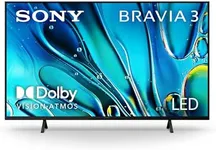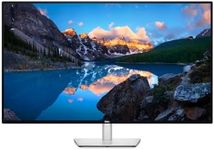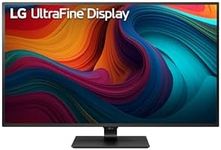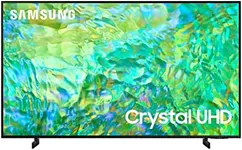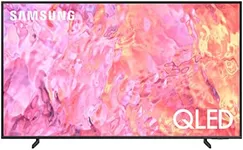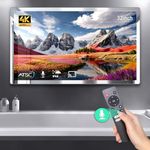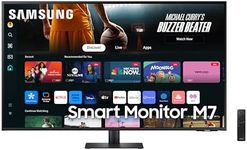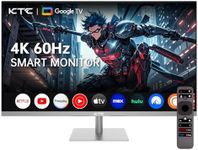Buying Guide for the Best 43 Inch Monitor 4 K
Choosing the right 43-inch 4K monitor can significantly enhance your viewing experience, whether you're using it for work, gaming, or entertainment. The key is to understand the various specifications and how they align with your specific needs. By focusing on the right specs, you can ensure that you get the best performance and value from your monitor.ResolutionResolution refers to the number of pixels that make up the display. A 4K monitor has a resolution of 3840 x 2160 pixels, which provides a very sharp and detailed image. This is especially important for tasks that require high levels of detail, such as graphic design, video editing, or gaming. If you need a monitor for these purposes, a 4K resolution is ideal. For general use, such as browsing the web or office work, the high resolution will still provide a crisp and clear display.
Refresh RateThe refresh rate is the number of times the monitor updates with new information per second, measured in Hertz (Hz). Common refresh rates for 4K monitors are 60Hz, 75Hz, and 120Hz. A higher refresh rate results in smoother motion, which is particularly beneficial for gaming and video playback. If you're a gamer, look for a monitor with at least 75Hz or higher. For general use or professional work, 60Hz is usually sufficient.
Response TimeResponse time is the time it takes for a pixel to change from one color to another, measured in milliseconds (ms). Lower response times reduce motion blur and ghosting, which is important for fast-paced gaming and video playback. Typical response times for 4K monitors range from 1ms to 5ms. If you're a gamer or watch a lot of action-packed content, aim for a response time of 1ms to 3ms. For general use, a response time of up to 5ms is acceptable.
Panel TypeThe panel type affects the monitor's color accuracy, viewing angles, and response time. The most common types are IPS (In-Plane Switching), TN (Twisted Nematic), and VA (Vertical Alignment). IPS panels offer the best color accuracy and viewing angles, making them ideal for professional work and general use. TN panels have the fastest response times, which is great for gaming, but they have poorer color accuracy and viewing angles. VA panels offer a good balance with better color accuracy than TN and better response times than IPS. Choose based on your primary use: IPS for color work, TN for gaming, and VA for a mix of both.
ConnectivityConnectivity options determine how you can connect your monitor to other devices. Common ports include HDMI, DisplayPort, USB-C, and sometimes older options like VGA or DVI. HDMI and DisplayPort are the most common and support high resolutions and refresh rates. USB-C is useful for connecting laptops and can also provide power. Ensure the monitor has the ports you need for your devices. For example, if you plan to connect a gaming console, make sure it has HDMI ports. For a laptop, USB-C might be more convenient.
ErgonomicsErgonomics refers to the monitor's adjustability features, such as height adjustment, tilt, swivel, and pivot. These features are important for ensuring a comfortable viewing experience and reducing strain on your neck and eyes. If you spend long hours in front of the monitor, look for one with good ergonomic options. This will allow you to adjust the monitor to your preferred viewing position, which can help prevent discomfort and improve productivity.
HDR SupportHDR (High Dynamic Range) enhances the contrast and color range of the display, providing more vivid and lifelike images. This is particularly beneficial for watching movies, gaming, and any content that supports HDR. If you consume a lot of HDR content or want the best possible image quality, look for a monitor with HDR support. However, for general office work or browsing, HDR is not as critical.
